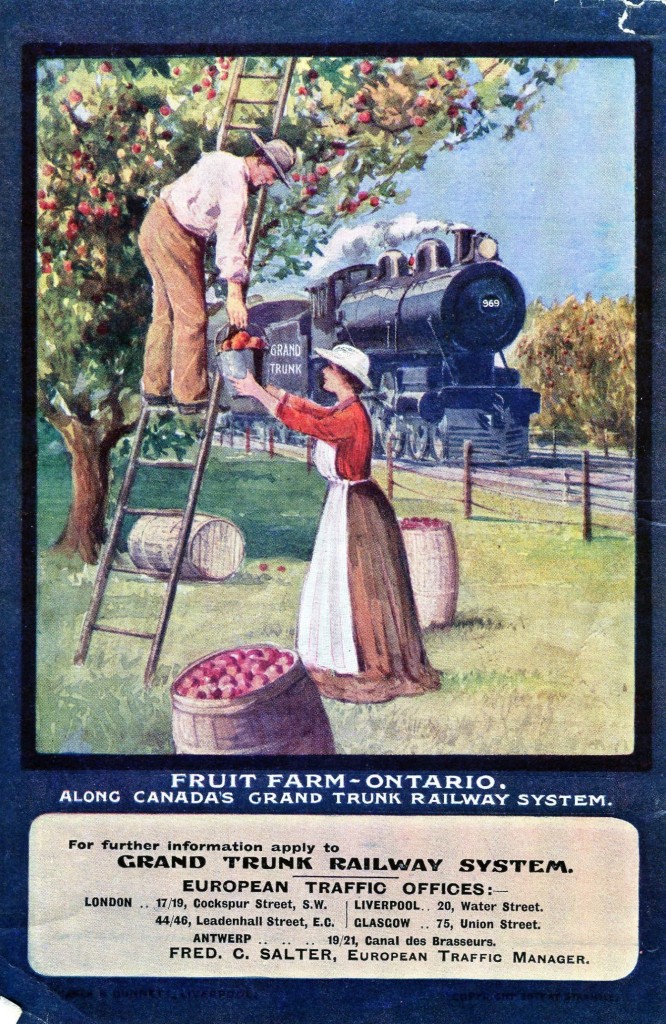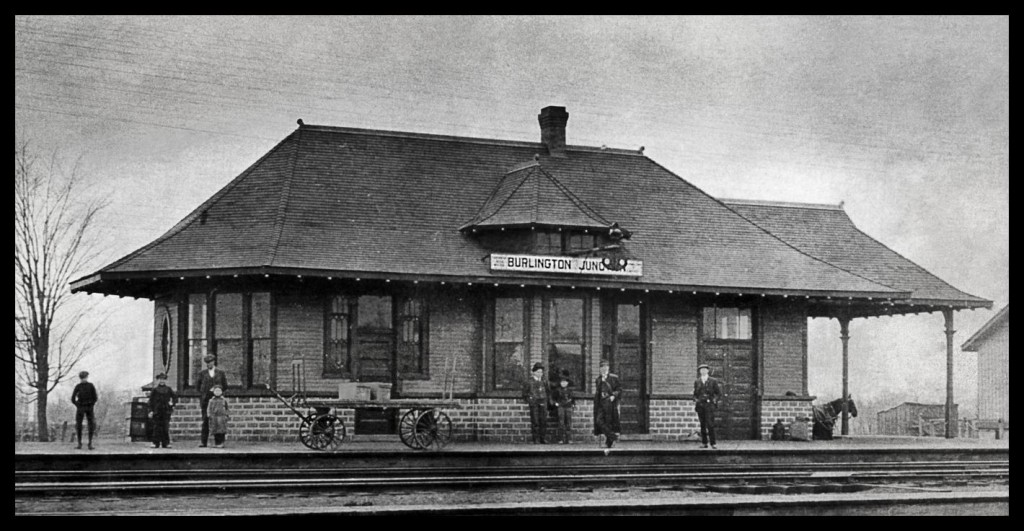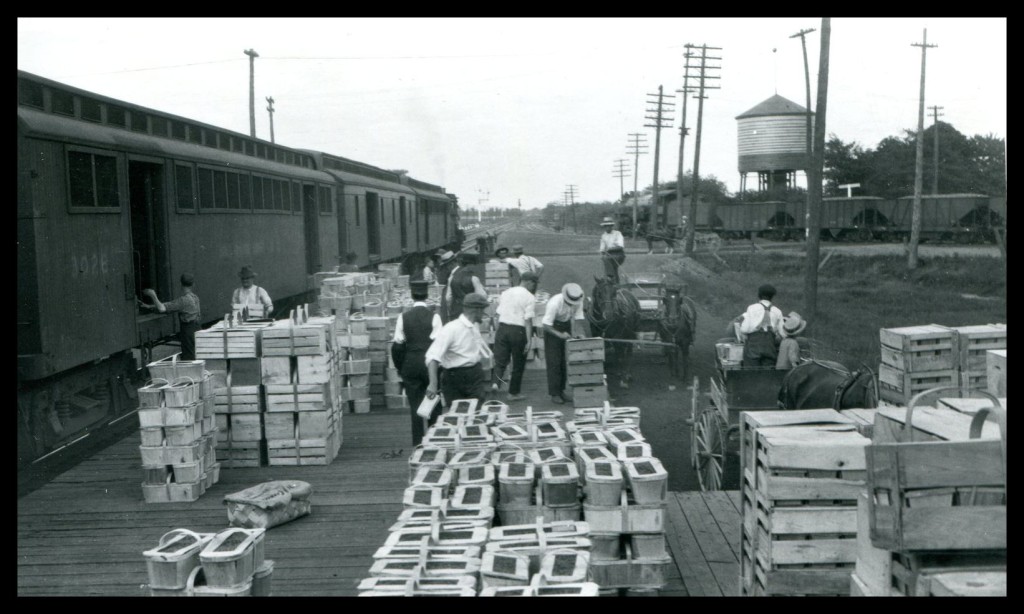 By Mark Gillies
By Mark Gillies
February 11, 2015
BURLINGTON, ON
If you’re like me, you really enjoy living in Burlington. We live in one of Canada’s wealthiest communities. We are also fortunate to live in a community that has a rich historical past. No doubt about it, this city has a lot going for it, yet at the same time, there is still much more room for improvement. As an historian, I have never seen so many in one community so determined to obliterate its historical past. What a shock! Over the years our local demolitionists have done a good job, there is not much remaining from the 19th century. Many Burlington buildings from the early 20th century now appear to be targeted too, even if they have historical recognition. The demolitionists continue to win most battles. The preservationists continue to lose most battles. Future generations will be denied the right to much of their heritage.

Burlington was put on the map with the combined efforts of the Grand Trunk Railway and our market gardeners, with both moving us quickly into the 20th century. This extremely rare full colour advertisement (only 1 remains) was inserted into European newspapers at the turn of the century, as an enticement to stimulate European immigration to the Garden of Canada.
There was a point in the recent past when the city of Burlington was prepared t sell the Freeman station for kindling to anyone who would cart it away. A city engineer stood before Council and said the build was structurally unsound and could literally fall apart any day. What that engineer did not know was this: much of Burlington’s current wealth is due in no small measure to the existence of the railway station at the Burlington Junction.
But hey! Who cares about historical buildings?
We have to give credit to local organizations like the Burlington Historical Society who work hard at documenting some of Burlington’s rich historical past, and they must become completely frustrated when there is nothing available to fill in the missing parts of our local heritage. Without their efforts, few of us would know anything at all about some of our glorious history. There are a couple on City Council who try their best to keep some of Burlington’s historical buildings relevant, and free of a wrecker’s ball. They can only do so much.
There are a few local citizens and businesses who thankfully come forward and voice their concerns in opposition to historical buildings facing demolition, and there are those who operate our two museums doing their best to showcase our past. There are some dedicated homeowners of historical residences who do their best to preserve the historical aspects of their property. Outside of these few, there seems to be an overwhelming desire to rid the landscape of anything that is old, and replace it with something else. This could be a new hi-rise condo, a hotel, a plaza, a factory, an oversized house, or anything else that may generate new tax revenues.
Don’t get me wrong, I’m not anti-progress; I’m really pro-heritage. I believe that as a society we have to do much better to harmonize the two together. The answer is to not always knock old buildings down, that’s too easy, and it’s cowardly. The intelligent and correct answer is to work with our historical properties and responsibly integrate them into today’s world.
Why is this desire to destroy everything old happening in Burlington? I believe it can be summed up in one word, “ignorance”. There are those from within the general public, some members of our own City Council, some employees at the City of Burlington, some in our educational system, some local developers, some in our own Heritage Burlington, even some departments within the provincial and federal governments who haven’t a clue about what is historical and what is worth saving in Burlington. What’s worse, many of them just don’t care.

Residents are so fortunate to have the 1906 Freeman Station in Burlington. At 109 years of age, this building has outlived all of us. It is recognized provincially and federally as historical, but this city owned property lacks the will of our local government for any financial support.
The Burlington Junction Train Station, or as it’s more commonly called, the Freeman Station, is a perfect example of how ignorance almost destroyed Burlington’s most historically significant building EVER.
The Garden of Canada made Burlington world famous
The Freeman Station represents the focal point of our community. Our whole local society and lifestyle, over several generations, can be worked around our local train station. Without the presence of the Grand Trunk Railway which ran their double tracks through Burlington, stretching from Montreal to Chicago, and with their other track running across the Beach Strip into Hamilton, the Niagara Region and into the United States, Burlington would probably not exist, as we know it today. Prior to the establishment of the predecessor railway through Burlington by the Great Western Railway, co-founded by Hamilton’s Sir Allan Napier MacNab, and Peter Carroll from Aldershot, goods were shipped by sailing vessels.
In the 1850s era, it was not uncommon to see wagons loaded with lumber lined up for over a mile waiting to be unloaded at the wharf located at the bottom of Guelph Line, and during the same period, they even backed up Waterdown Road at Brown’s Wharf in Aldershot. Over time, roughly 2-3 decades, when the timber had all been harvested, and the lands cleared for farming, the second local economic base became wheat, shipped first by sailing vessels, then by rail. When the Canadian west opened up in the 1870s & 1880s with free land available to new settlers, many of our local wheat farmers moved to the prairies, and wheat ceased to be a local crop. This left Burlington and surrounding areas looking for a third economic base.
Established farmers and even new settlers decided they would try other agricultural products. Their choices were fruit and vegetables. As it turned out, this was just about the most perfect location in all of North America for a wide variety of food production. The soil conditions, the temperature, the growing season, everything was perfect for great harvests. In short order, Burlington had thousands of acres of flourishing apple, pear, peach, plum, and cherry trees, plus strawberries, melons, tomatoes, beans, celery, cucumbers, and countless other fruits and vegetables under cultivation producing vast quantities.
There were market garden farms covering Aldershot, Freeman, Nelson, Appleby, Port Nelson, Kilbride, Lowville, Campbellville, Tansley, Zimmerman, all villages surrounding Burlington, with the Freeman Station at the heart of the whole area. Our area was a market gardening mecca, so much so, that Burlington became known around the world as “The Garden of Canada”. The harvests were so bountiful, that Burlington shipped produce to Hamilton and Toronto, and when we saturated those two markets, the market gardeners expanded some more, and shipped all over Ontario, and then it was all across Canada, followed by Europe, and then it was South Africa. Burlington was helping to feed many parts of the world. The name “Aldershot melon” became just as famous internationally as the well known “Idaho potato”.
Just in time delivery started with the GTR at Freeman Station.

What made Burlington wealthy in the early part of the 20th century was the ability of the local market gardeners to get their high grade produce to the Grand Trunk Railway’s Freeman Station and have it shipped across the country and around the world, arriving just as fresh as when it was picked.
How did our market gardeners get this fragile produce to these destinations? The 1906 Freeman Station which is now being restored and re-located to Fairview Street, was the focal point for most of this growth. Previously, there were two other train stations in Freeman which were destroyed by fire, one in 1883 and the other in 1904. They also played a part in this new economy. If it wasn’t for the railways in Burlington, the local wealth generated would not have happened. Burlington became very affluent at the turn of the 20th century, due to the efforts of the Grand Trunk Railway to quickly move the product, the local development of refrigerated boxcars, and also, our market gardeners who comprehended the science of agriculture, and maximized their yields. But, this was just one part of the Freeman station’s significance to Burlington. There were many more.
Tomorrow, find out how the Freeman Station played different roles in Burlington during the early part of the 20th century.
Mark Gillies is a lifelong resident of Burlington, who grew up in Aldershot and developed as a local historian, researcher, master genealogist and writer who has a passionate interest and extensive knowledge of the many early pioneer families.
Mark writes a regular column about colourful local history introducing Burlingtonians to the people that made this city what it is today.




















“As an historian, I have never seen so many in one community so determined to obliterate its historical past.” Well said and for anyone who grew up in Burlington this is so sadly apparent. These wonderfully researched and written articles are a pleasure to read.
What seems to be not reported is the Burlington/Freeman station was a platform for an independent experimental method
of detection of passing railway trains. The cmpany modified (destroyed?) the interior of the station to accomodate their needs. However this occupation ensured the station could remain in situ beside the present CN Oakville Subdivision.
Indeed, the fate of the station in 1969 was sealed with the construction of the railway underpasses at Brant Street in 1969. The bridge for the Oakville Subdivision was constructed for three tracks. Two tracks were in existence for many years; there was room on the south side for a third track which came to fruition with the expansion of GO Transit service.
And the station had to be moved. Sadly the freight shed to the immediate west of the station was demolished and loaded into a railway gondola on a siding behind the station.
Thank you Mark. Always a pleasure to read your posts, especially when they speak about Burlington’s agricultural past as the “Garden of Canada”.
Although our city may now have been developed to the extent that the land may no longer support large scale farms south of Dundas, there is increasing support for smaller urban agriculture in people’s yards, balconies, and community gardens. Burlington’s garden culture is not entirely lost, and may have a resurgence yet that reflects the 21st Century.